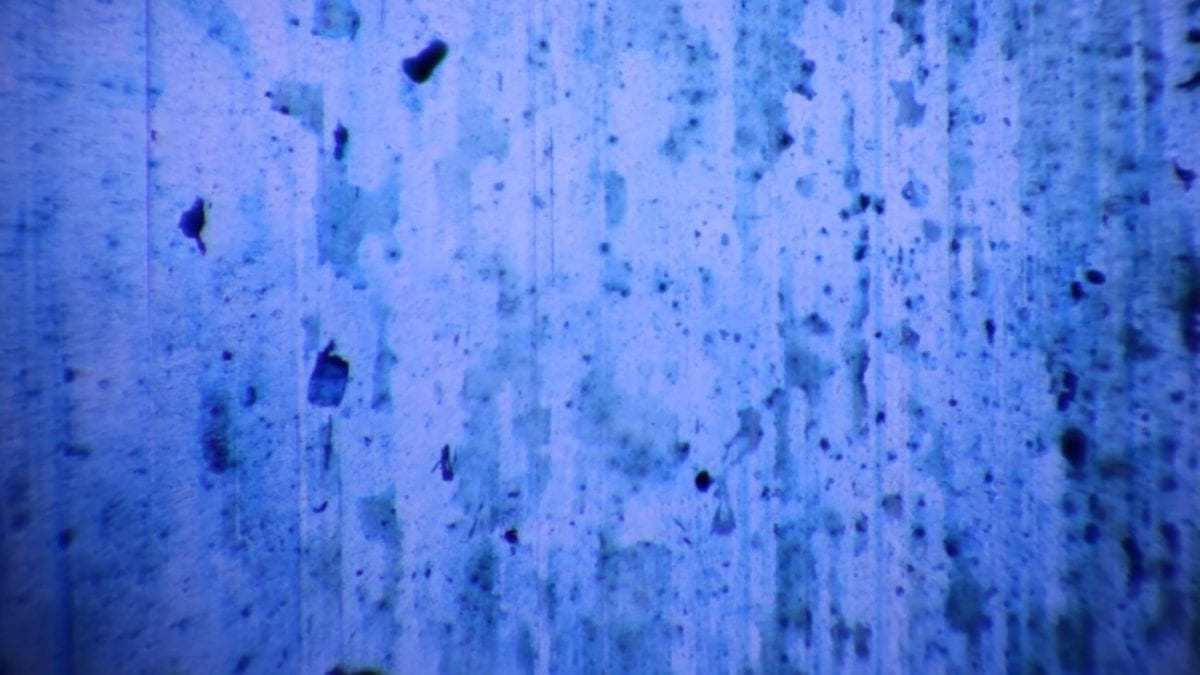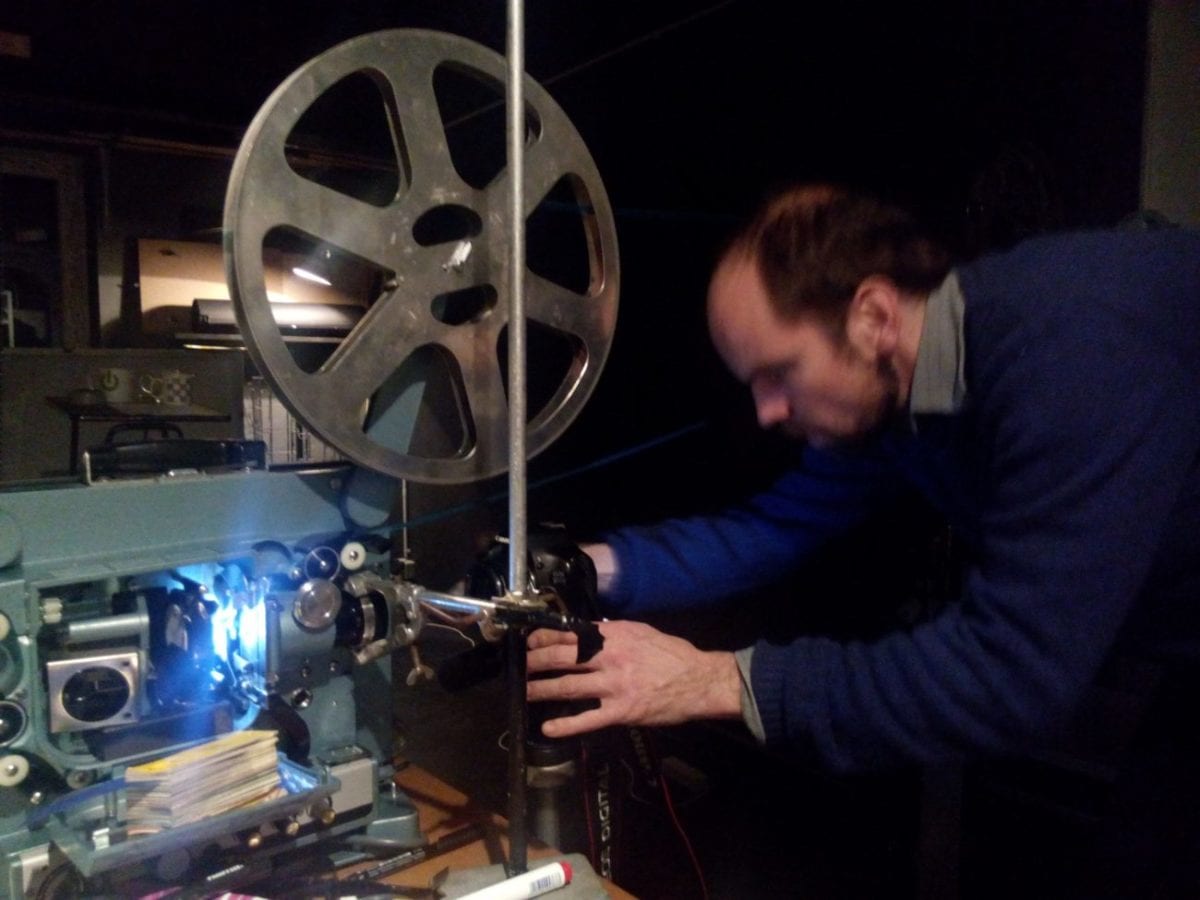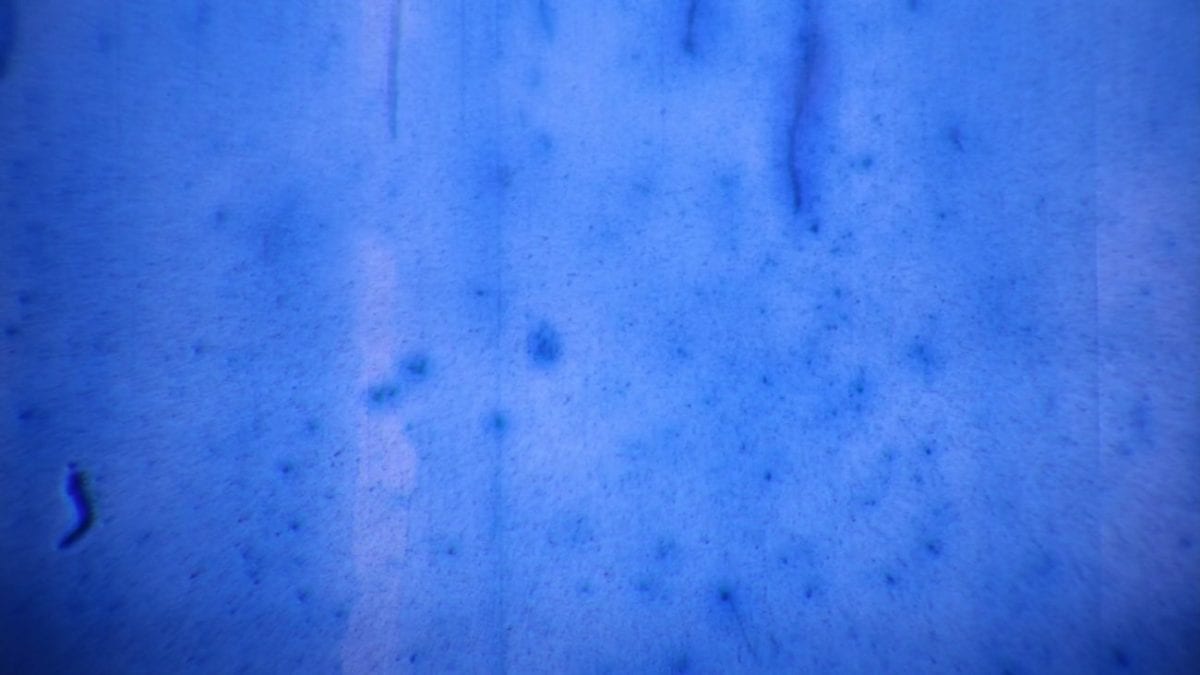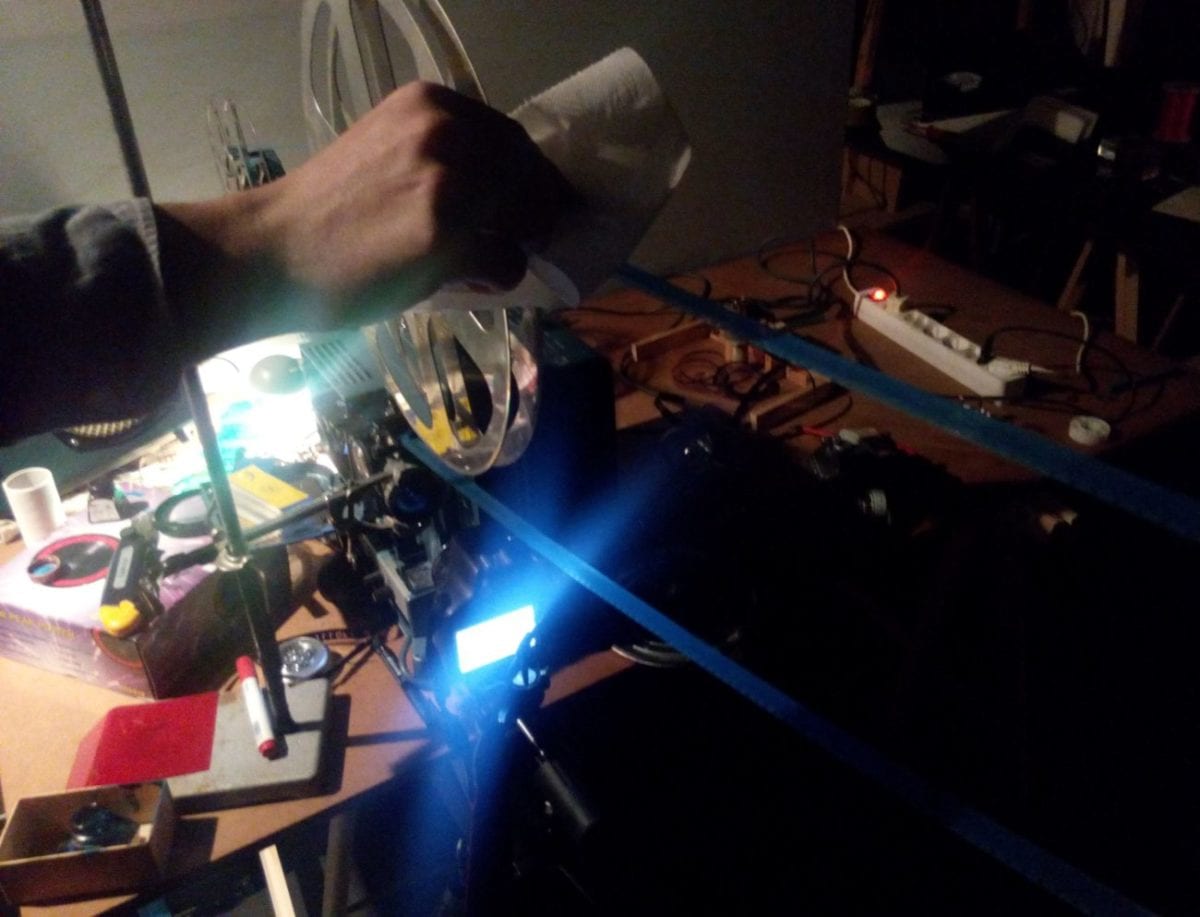Ahead of the release of Efdemin‘s new album ‘Decay’, scheduled for release on 31st March via Dial, Inverted Audio are proud to premiere the official music video for ‘Some Kind Of Up And Down Yes‘. In the interview below Toby Cornish, the creator of the short, co-directed with Phillip Sollmann, reveals the intricacies behind the 16mm film. Flick through the image slider above to see behind the screen photos.
Please can you introduce yourself and tell us what Jutojo is all about, who is involved and what inspired you to establish the agency?
I am Toby Cornish half English / half German. Film-maker, video artist and designer. Grew up and studied in London and have lived in Berlin since 1998.
Jutojo was formed by JUlie Gayard, TOby Cornish and JOhannes Braun in Berlin – officially in 2001 but already after three years of making covers and doing club visuals and music videos for Jazzanova and Sonar Kollektiv in our spare time.
We all had a similar vision and interest in making films, projections or graphic design with very analogue means of production. Creating visual effects with projections through liquids, onto surfaces, with reflections and lenses. For club visuals we used super 8 films of material we shot ourselves alongside slide projections as well as creating layers of screens and structures to project onto.
Our paths first crossed with Phillip Sollmann’s in 2006 when we played a video set to his “Something Is Missing“ ambient drone performance during an evening at the Melancholy exhibition at Berlin Neue National Gallerie.
Tell us about the video you produced for ‘Some Kind Of Up And Down Yes‘ – How was it made and what inspired you to use these materials and media? Is there a concept to the video?
Actually Phillip and I started this project by looking at old VHS tapes and how they deteriorate. We were thinking about analogue forms of video and film-making with respect to the theme of Decay and how they allow traces to alter the surface of the images over time.
We then started experimenting with found 16mm footage but realized the imagery had too much “content” and looked too retro. I had a roll of clear 16mm film which seemed perfect to deal with the medium of film and its decay without having any specific images to add layers of additional meaning.
Dust particles are usually the bane of any film-maker, looking for the “perfect” picture. But they also feature heavily and determine the pace and rhythm of the images. On top of that, they reference another collaboration and live-performance “Particular Behaviour” where we projected light onto dust and ash floating in an air tight aquarium.
Can you explain the technical process behind creating the video?
This video was created using a clear acetate strip of 16mm film, stuck together in a loop running through a film-projector. In a way, the simplest and most direct way of producing moving images. The projector sent the image directly onto the chip of a digital SLR camera with no lens attached.
There is a long tradition of drawing and scratching on film – a favorite work in this field is “Free Radicals” by Len Lye – but our approach was very different in that we worked on the film as it was moving through the projector, adding ink, scratching it with a blade and wiping it off again. Therefore the ink is still fluid as it passes through the projector and creates strange shifts in focus depending on which side of the film was in focus.
While the film ran, we were listening to the music and there some sections which have a rhythmic pulse. We did this process about 5 times till we were happy with the result and only made about two or three cuts in the edit. The whole process including the edit took about 7 hours.
Your previous work, such as ‘Open System – Blue Planetarium‘ explored a similar method of production for ‘Some Kind Of Up And Down Yes’ – What is it about this process that appeals to you?
The Open System project involves filming real time chemical reactions in a live performance. It’s also filmed in real-time with a camera and no other interface involved. These projects utilize a very direct way of making images in the digital age where each stage of making images can be infinitely fine-tuned and corrected and one loses site of one’s original intentions. In both projects we only control the initial process but not the final result. For me it is easier to create something aesthetically pleasing when the process is not too laboured and we allow for serendipity.
What’s your background in producing visuals and videos? Where did your interest for experimenting with this medium stem from?
Originally I started making super 8 films with my grandfather’s camera as a teenager with a friend from school. We would see what the camera could do and experiment with animation techniques. Everything was decided and edited in-camera. Later I studied graphics but always tried to involve film or slide projection, this interest and approach, ultimately lead to the way Jutojo first made club-visuals in Berlin in the late 1990s where we had a weekly residency at the WMF club.
You’re also responsible for the visual identity of Efdemin’s ‘Chicago‘ album and music video ‘There Will Be Singing‘; Can you explain what inspired the two of you to ground the album on the 1950’s cityscape and Mies van der Rohe architecture?
Actually the graphic-design for ‘Chicago’ was done by Till Sperrle / ITF Design – so I can only speak for the video which does however have the same source as the album cover.
Phillip (Efdemin) came to us with a pile of books of Mies van der Rohe Chicago buildings saying that there was a sense of longing in the album for another time and a nostalgia for the modernist ideal of the 40s and 50s, and a musical connection to Chicago’s rich blues, and subsequent techno traditions. That video was also created in front of a camera lens – where we put books on tracks and passed them slowly in front of the camera.
Am I right in saying this material was written in Japan? What did you get up to whilst travelling with Phillip Sollmann in Japan that influenced ‘Some Kind of Up and Down’?
The music was actually completed in Japan but I was not present in Japan.
What’s next for Jutojo? Will there be any other videos for the ‘Decay’ album?
For the ‘Decay’ album we are working on 2 more tracks – one in collaboration with Hanna Schwarz shot on 16mm film in a botanical garden. I have just finished a long film project with Sophie Clements for a 55 minute concert by Icebreaker and J Peter Schwalm called “Kraftwerk Uncovered – A Future Past“.
Efdemin’s ‘Decay’ LP is released on 31st March 2014 via Dial.




